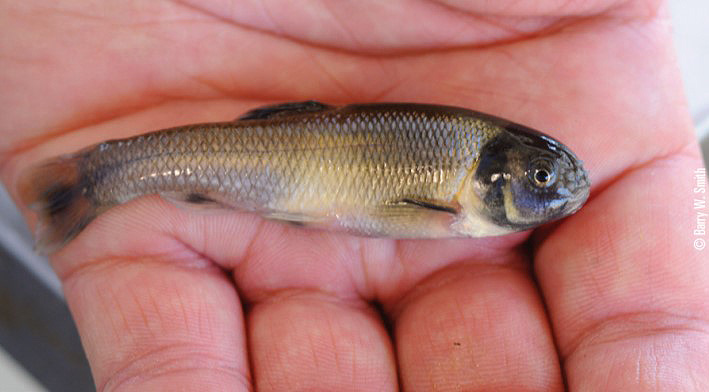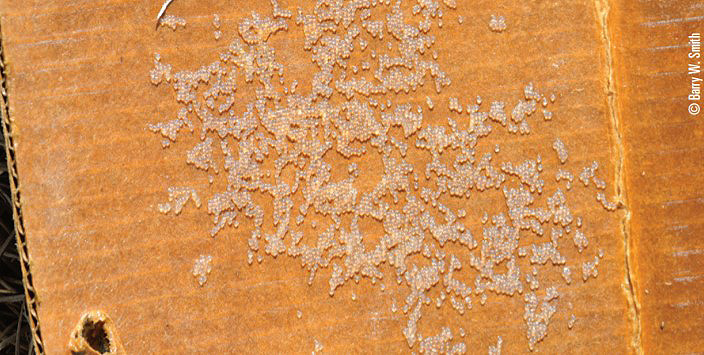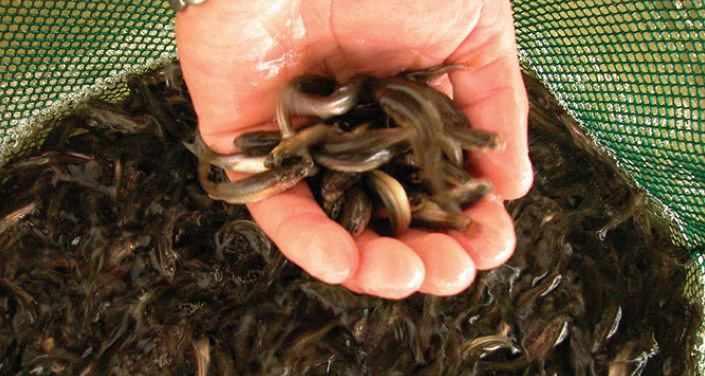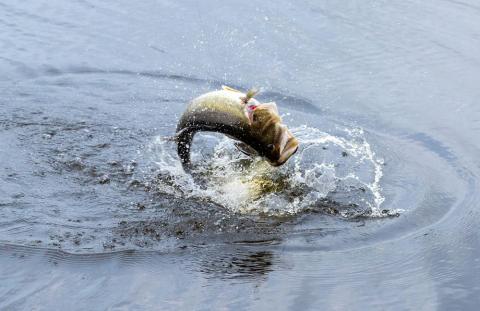Barry W. Smith | Originally published in GameKeepers: Farming for Wildlife Magazine. To subscribe, click here.

Fatheads are common bait minnows that are found throughout the United States and are often called “tuffies”or “tuffie minnows.” They are cultured in ponds, primarily in Arkansas, for the bait industry and also harvested from the wild in many mid-west reservoirs. Their native distribution was from central Canada to Mexico, but as a result of decades of use as bait are now found throughout most of the United States.
These minnows are olive-colored and seldom exceed 3 inches in length. They are especially beneficial to new pond stockings because they are the first fish to spawn in the spring and create lots of food for 2-inch bass fingerlings that are usually introduced into new ponds during June. “Bass fingerlings are extremely predacious, even at sizes less than 2 inches,” states Don Keller, Co-founder of American Sport Fish Hatchery, Montgomery, Alabama. “If fatheads are not stocked with the bluegill fingerlings, the bass fingerlings are forced to compete with the bluegill for zooplankton and small insects until the original stocked bluegill begin to spawn, this is often not until late June or even July. Having small minnows for the bass fingerlings to eat as soon as they are stocked increases their growth rate and survival. We often see bass fingerlings feed on the fathead minnow reproduction within a minute of stocking into new ponds!” says Keller.
Spawning

Fatheads typically live for less than two years and have some unique spawning characteristics. Although they may sweep out a small 3-inch circular bed, they prefer to spawn upside down, depositing their adhesive eggs on the underside of rocks, logs or even vegetation. In newly stocked bass-bluegill ponds we often add waxed cardboard, typically from meat boxes, to the surface of the pond. These will float around the pond or be semi-buoyant through most of the spawning season, providing plenty of surface area for the attachment of the minnow’s eggs. During the summer the cardboard will biodegrade and does not require removal.
Spawning usually begins in the spring when water temperatures are in the low to mid 60s. Mature females may lay eggs weekly, depositing from 200 to 500 eggs per spawn. The males typically guard the eggs. Spawning may continue until temperatures reach 85F. As the bluegill obtain sizes of 3 to 4 inches, they will also feed on the small minnow reproduction, boosting their growth and egg production. Fatheads are a valuable addition to new pond stockings.
Stocking Rates

Fatheads may be stocked at a rate of 1,000 to 2,000 per acre or 10 pounds or more per acre. If the minnows are stocked during the fall or early winter, they may be small minnows as they will grow and reach sexual maturity prior to the spring spawning season. If the pond is stocked during January or later, larger, more mature minnows should be introduced so that they will be ready to spawn when the spring water temperatures stabilize in the low 60s. We usually recommend adding fatheads whenever the fingerling bluegill are stocked.
Older Lakes or Ponds
As discussed, new pond stockings can benefit from stocking fathead minnows, however, established ponds or lakes benefit very little from stocking these minnows. In new ponds the original minnows have no predators and can grow to sexual maturity and produce food for the young bass and bluegill. In established or older ponds the minnows have little chance to live to sexual maturity and serve directly as food for the established bass population. Since it takes approximately 10 pounds of minnows to convert to a pound of bass, this is a very expensive method to attempt to improve bass growth or condition. As biologists, we seldom recommend stocking any forage fish that does not produce food. In established lakes, intermediate bluegill, golden shiners or threadfin shad would likely be better choices. Consult a fisheries biologist before making that decision.
If you are stocking a new lake or pond, a small investment in fathead minnows will yield a big reward!































